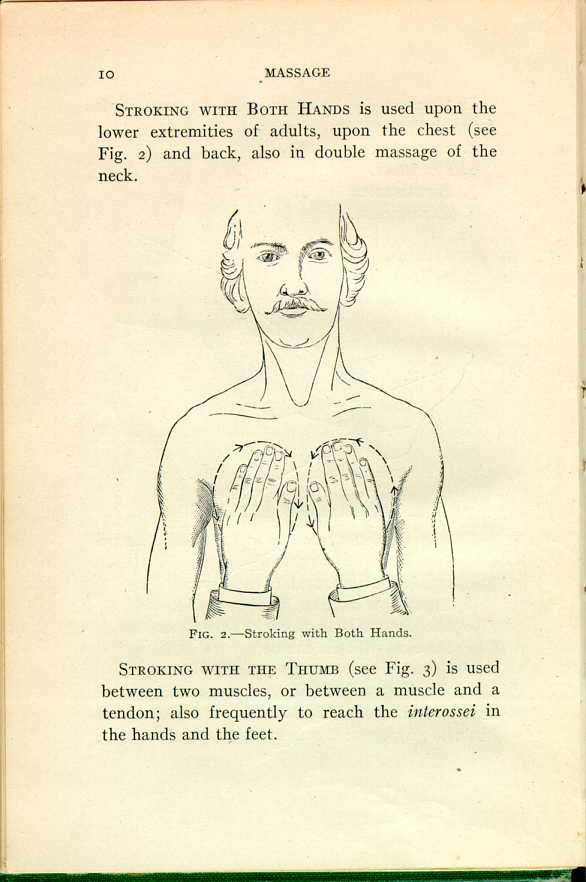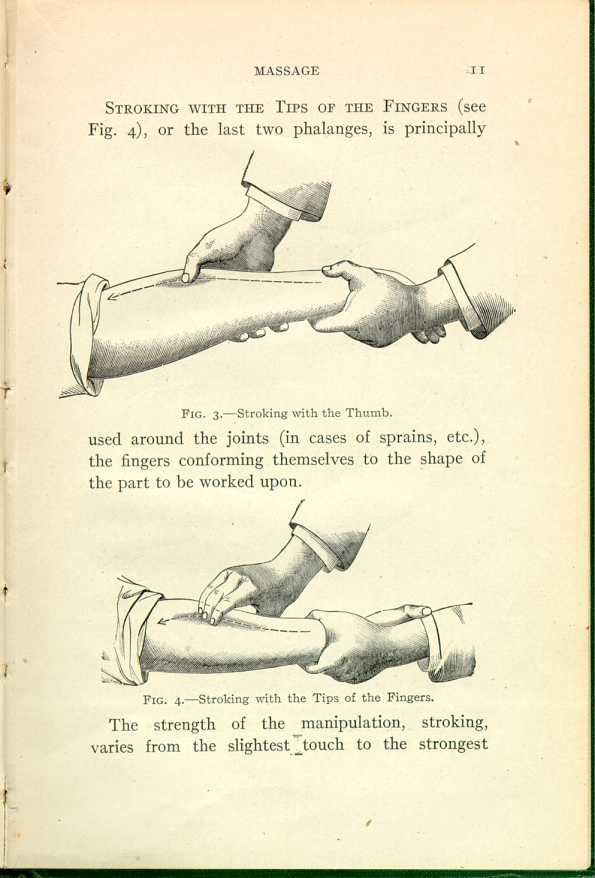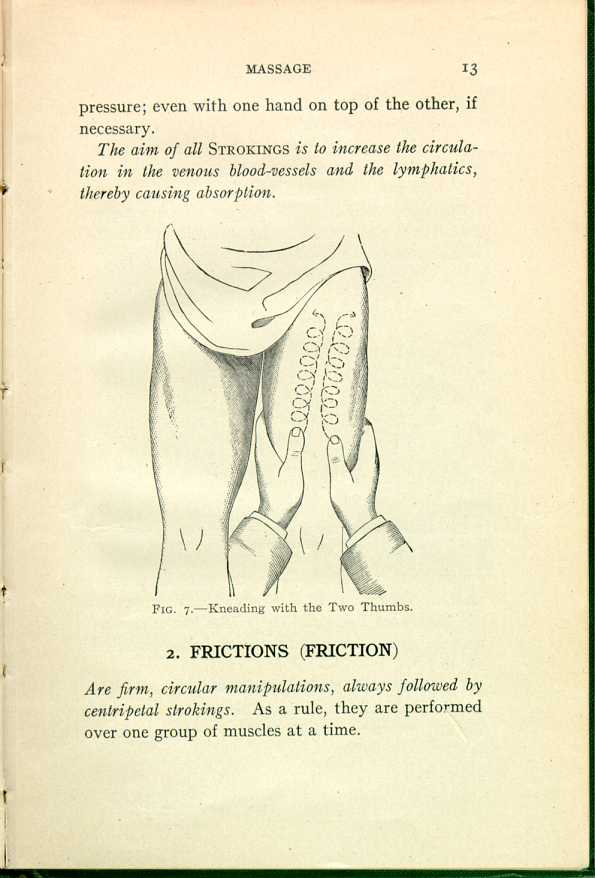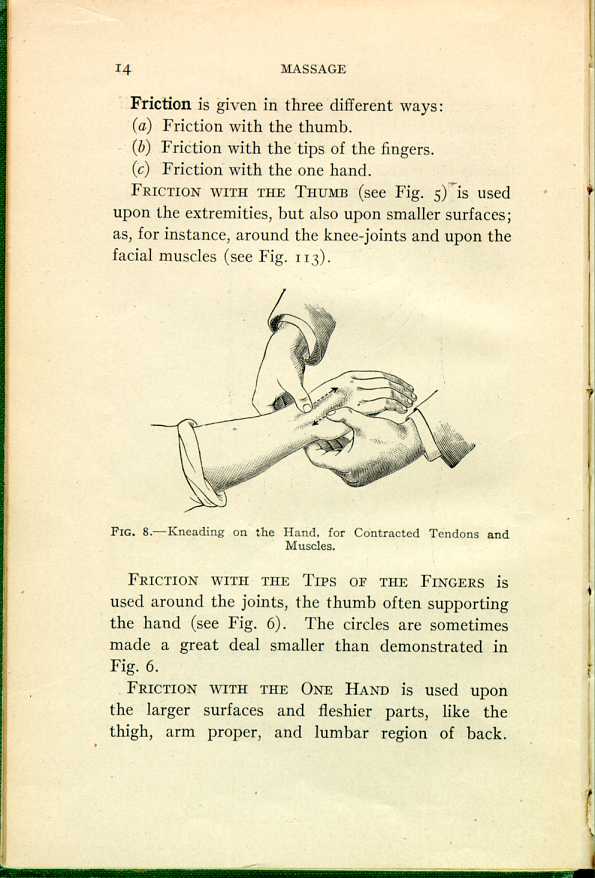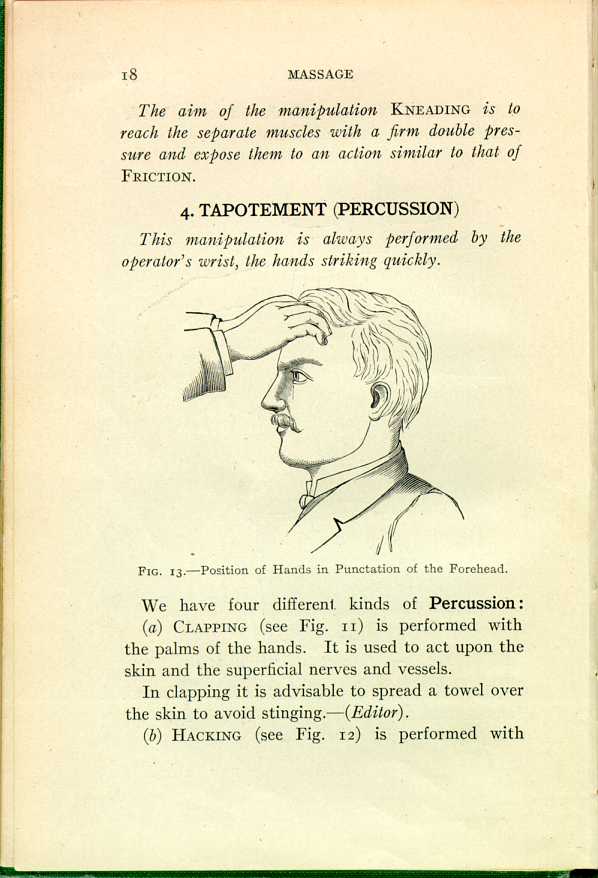| Massage and the Original Swedish Movements | ||
MASSAGE
The word Massage is a derivation from the Greek massein, or the French masser, which both mean: to knead. A male operator is called a masseur, a female operator, a masseuse.
Massage is a scientific treatment, by certain passive systematic manipulations, upon the nude skin of the human body.
Dr. Mezger, of Amsterdam (now practicing in Wiesbaden, Germany), and his two pupils, the Swedish physicians Berghman and Helleday, were among the first to apply the massage treatment scientifically. Their method is now used throughout Europe. According to Mezger, massage is a scientific treatment—i.e., based upon the anatomy and the physiology of the human body; his manipulations are certain—that is, given or fixed, so that an uninstructed person can not pick up the treatment—it is an art that can not be self-acquired; all manipulations are passive—i.e., applied to the patient without his assistance or resistance; the manipulations are also systematic—i.e., they are arranged so as to act systematically upon the different tissues of the human body.
Dr. Mezger divides the massage treatment into four principal manipulations:
- 1. EFFLEURAGE.
- 2. FRICTIONS.
- 3. PÉTRISSAGE.
- 4. TAPOTEMENT.
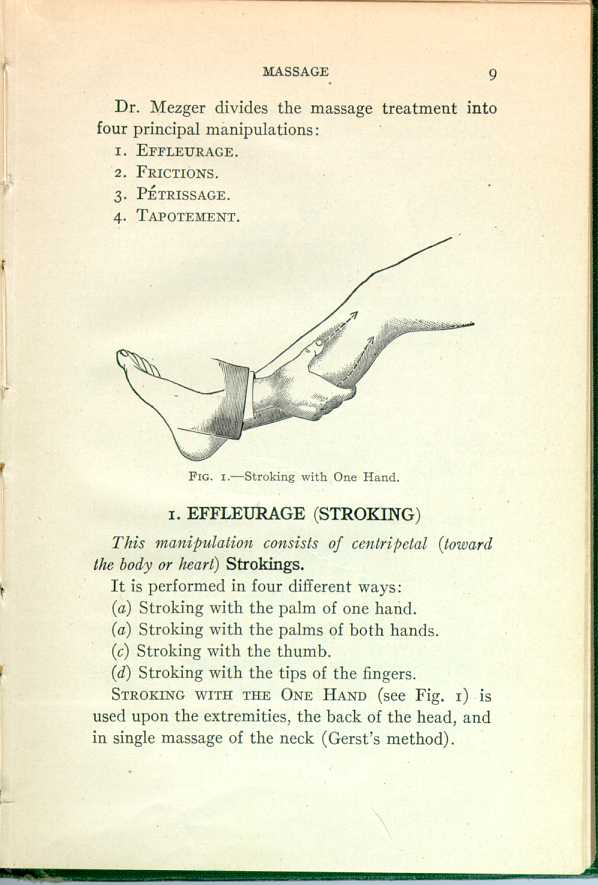
Fig. 1—Stroking with One Hand.
[Description:
Drawing of one hand stroking lower leg.
]
1. EFFLEURAGE (STROKING)
This manipulation consists of centripetal (toward the body or heart) Strokings.
It is performed in four different ways:
- (a) Stroking with the palm of one hand.
- (b) Stroking with the palms of both hands.
- (c) Stroking with the thumb.
- (d) Stroking with the tips of the fingers.
STROKING WITH THE ONE HAND (see Fig. 1) is used upon the extremities, the back of the head, and in single massage of the neck (Gerst's method).
STROKING WITH BOTH HANDS is used upon the lower extremities of adults, upon the chest (see Fig. 2) and back, also in double massage of the neck.
STROKING WITH THE THUMB (see Fig. 3) is used between two muscles, or between a muscle and a tendon; also frequently to reach the interossei in the hands and the feet.
STROKING WITH THE TIPS OF THE FINGERS (see Fig. 4), or the last two
phalanges, is principally
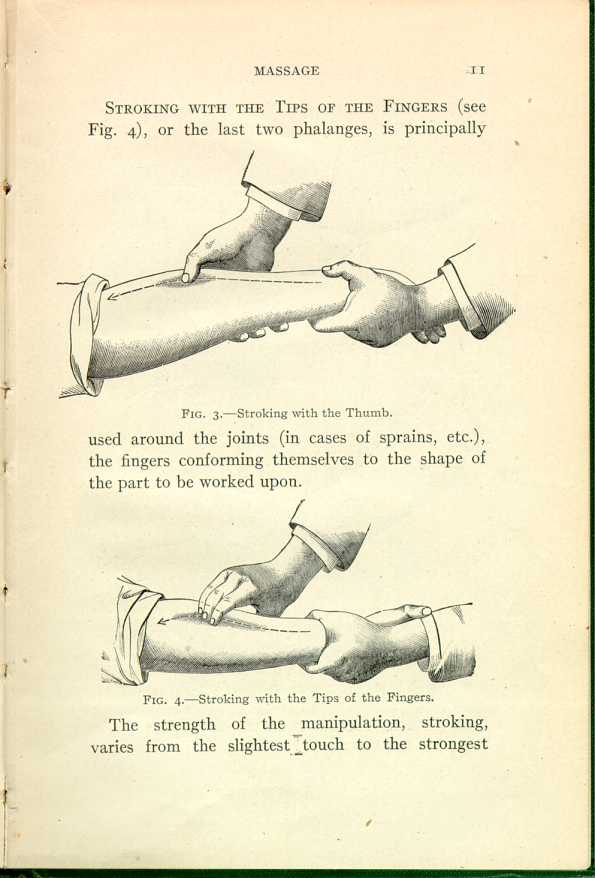
FIG. 3.—Stroking with the Thumb.
[Description:
Drawing of an operator's thumb stroking a patient's forearm.
]
The strength of the manipulation, stroking, varies from the slightest touch to the strongest
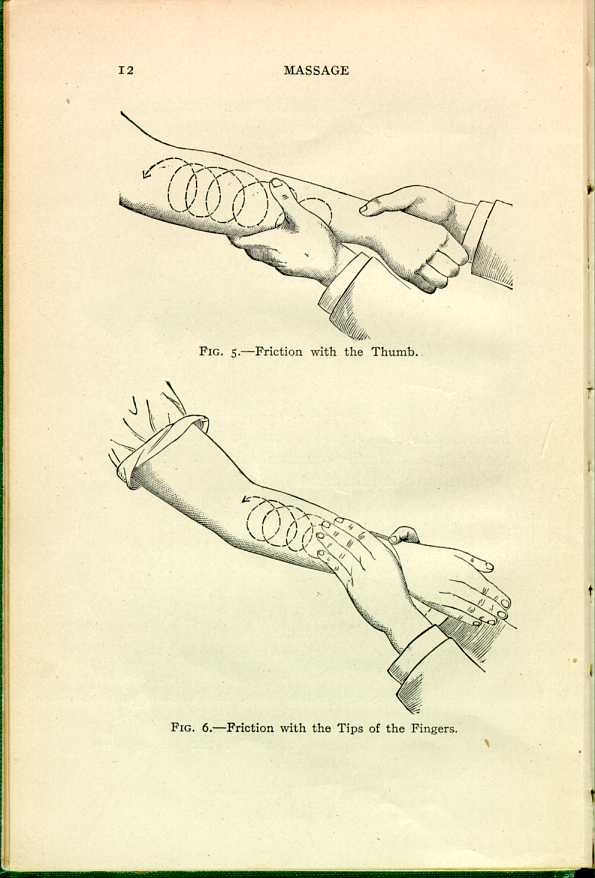
FIG. 5.—Friction with the Thumb.
[Description: Drawing of an operator's hand stroking a patient's forearm with circular motions of the thumb. ]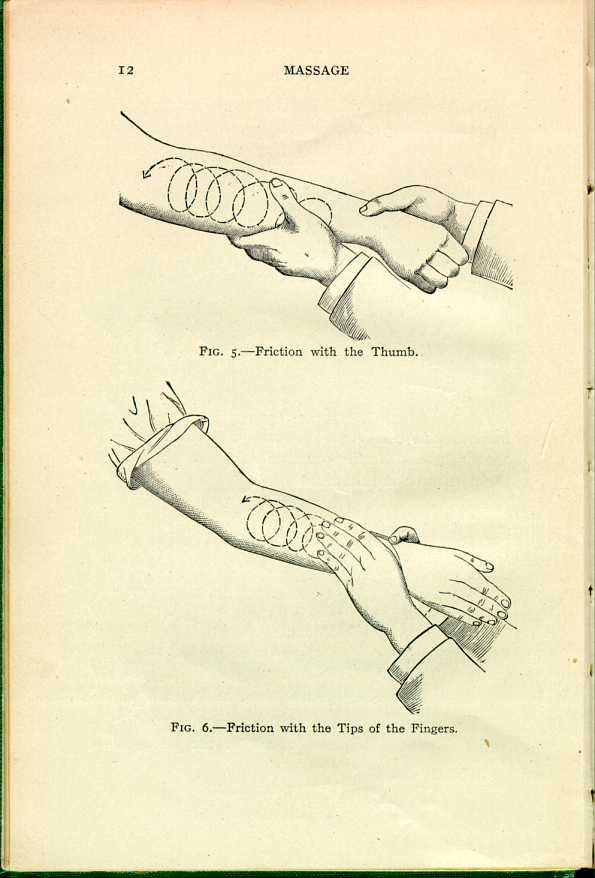
FIG. 6.—Friction with the Tips of the Fingers.
[Description: Drawing of an operator's hand stroking a patient's forearm with circular motions of the fingertips. ]The aim of all STROKINGS is to increase the circulation in the venous blood-vessels and the lymphatics, thereby causing absorption.
2. FRICTIONS (FRICTION)
Are firm, circular manipulations, always followed by centripetal strokings. As a rule, they are performed over one group of muscles at a time.
Friction is given in three different ways:
- (a) Friction with the thumb.
- (b) Friction with the tips of the fingers.
- (c) Friction with the one hand.
FRICTION WITH THE THUMB (see Fig. 5) is used upon the extremities, but also upon smaller surfaces; as, for instance, around the knee-joints and upon the facial muscles (see Fig. 113).
FRICTION WITH THE TIPS OF THE FINGERS is used around the joints, the thumb often supporting the hand (see Fig. 6). The circles are sometimes made a great deal smaller than demonstrated in Fig. 6.
FRICTION WITH THE ONE HAND is used upon the larger surfaces and fleshier parts, like the thigh, arm proper, and lumbar region of back.
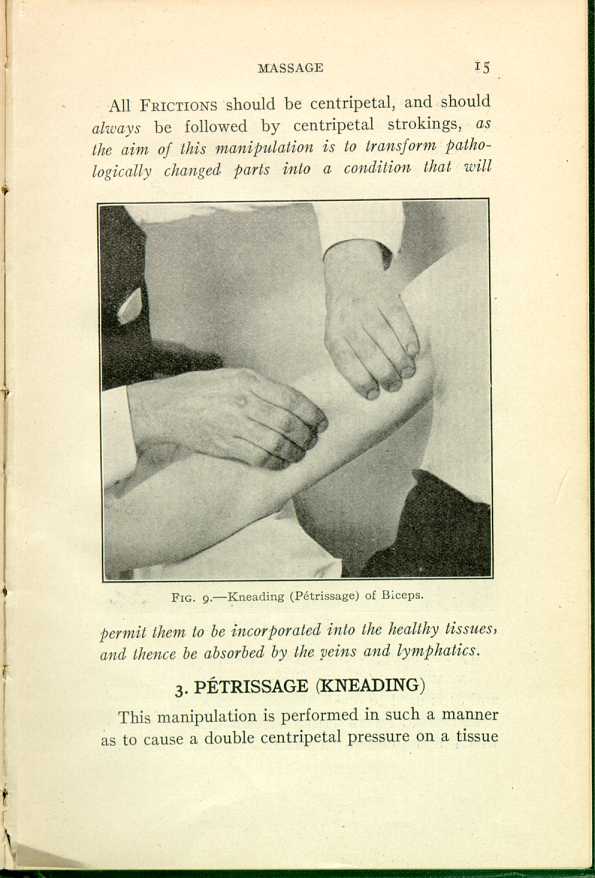
FIG. 9.—Kneading (Pétrissage) of Biceps.
[Description: Photograph of an operator's hands kneading a patient's bicep. ]3. PÉTRISSAGE (KNEADING)
This manipulation is performed in such a manner as to cause a double centripetal pressure on a tissue
We have three different kinds of Pétrissage:
- (a) Kneading with the two thumbs.
- (b) Kneading with the thumb and fingers.
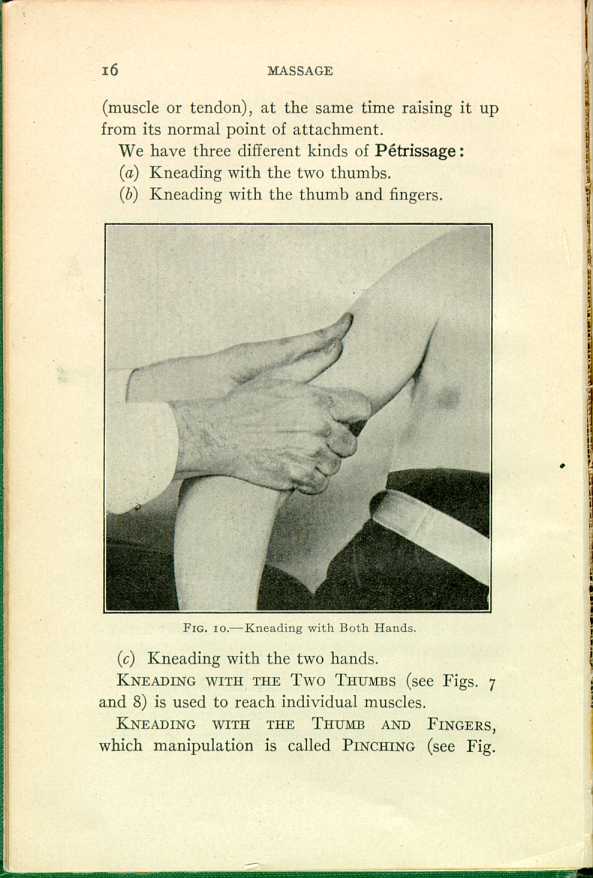
FIG. 10.—Kneading with Both Hands.
[Description: Photograph of an operator's hands kneading a patient's arm. ] - (c) Kneading with the two hands.
KNEADING WITH THE TWO THUMBS (see Figs. 7 and 8) is used to reach individual muscles.
KNEADING WITH THE THUMB AND FINGERS, which manipulation is called PINCHING (see Fig.
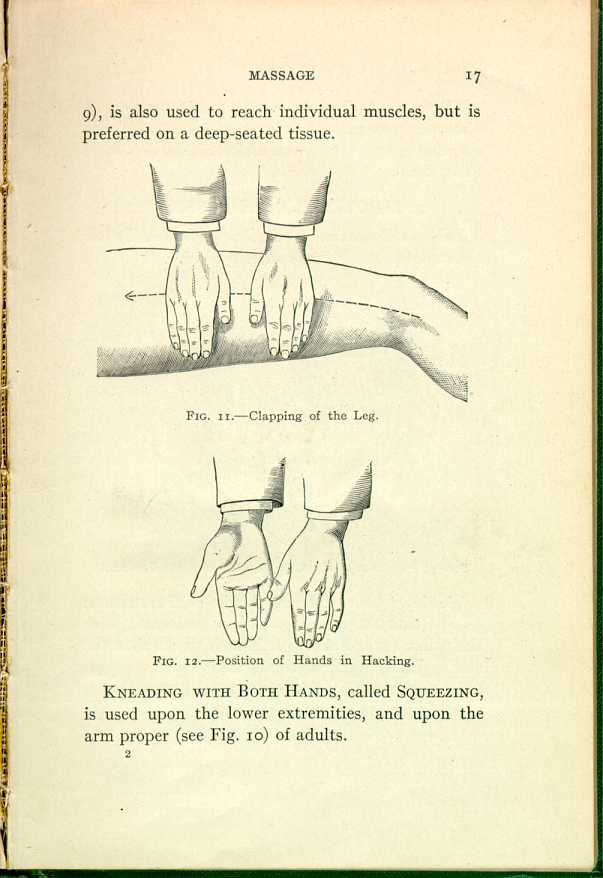
FIG. 11.—Clapping of the Leg.
[Description:
Drawing of two hands against a leg. Dotted lines indicate movement.
]
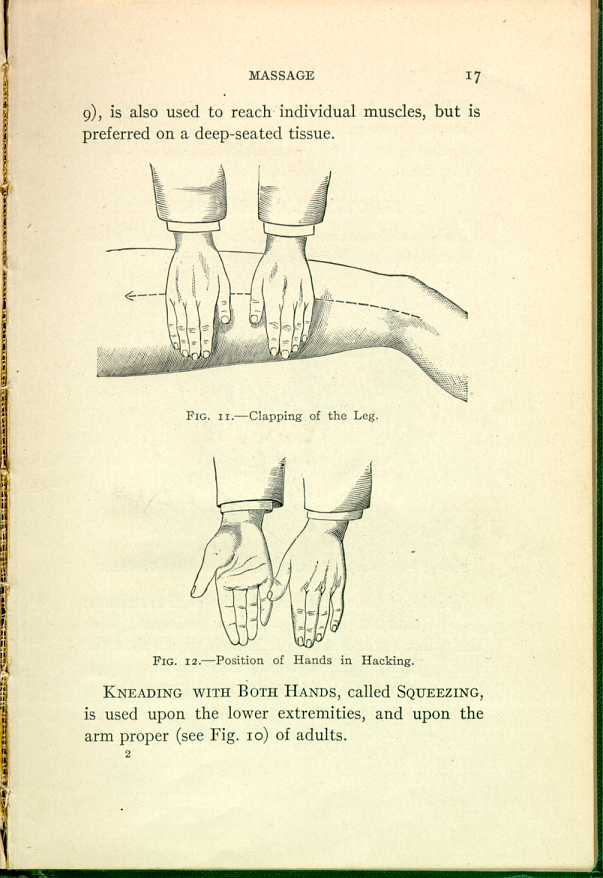
FIG. 12.—Position of Hands in Hacking.
[Description:
Drawing of two hands pointing down.
]
KNEADING WITH BOTH HANDS, called SQUEEZING, is used upon the lower extremities, and upon the arm proper (see Fig. 10) of adults.
The aim of the manipulation KNEADING is to reach the separate muscles with a firm double pressure and expose them to an action similar to that of FRICTION.
4. TAPOTEMENT (PERCUSSION)
This manipulation is always performed by the operator's wrist, the hands striking quickly.
We have four different kinds of Percussion:
(a) CLAPPING (see Fig. 11) is performed with the palms of the hands. It is used to act upon the skin and the superficial nerves and vessels.
In clapping it is advisable to spread a towel over the skin to avoid stinging.—(Editor).
- (b) HACKING (see Fig. 12) is performed with
the ulnar border of the hand. It is used around nerve centers and upon the muscles.19
- (c) PUNCTATION (see Fig. 13) is performed with the
tips of the fingers. It is used upon the head and in circles around the
heart.
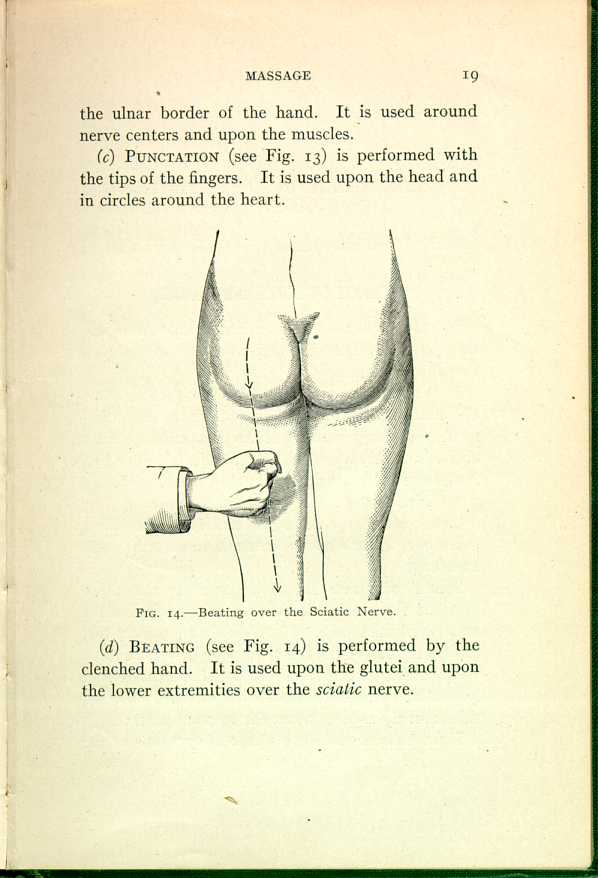
FIG. 14.—Beating over the Sciatic Nerve.
[Description: Drawing of two hands beating the buttocks and back of the thighs. A dotted line indicates movement. ] - (d) BEATING (see Fig. 14) is performed by the clenched hand. It is used upon the glutei and upon the lower extremities over the sciatic nerve.
| Massage and the Original Swedish Movements | ||
